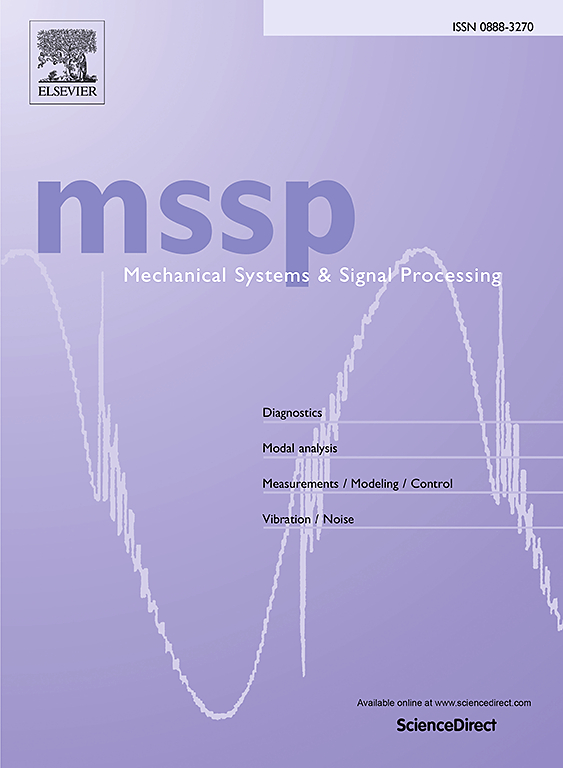Adaptive weighted data fusion-driven multi-layer discriminative dictionary learning method for intelligent fault diagnosis of rotating machinery
IF 7.9
1区 工程技术
Q1 ENGINEERING, MECHANICAL
引用次数: 0
Abstract
Dictionary learning is an effective intelligent diagnosis model to achieve fault classification of rotating machinery. However, existing dictionary learning methods mostly employ a single-layer architecture for dictionary learning, which hinders the learning of deeper discriminative features. Besides, due to limited feature information and noise interference, dictionary learning models learned from single-domain data cannot guarantee that the vibration signals achieve a satisfactory sparse representation. In this paper, an adaptive weighted data fusion-driven multi-layer discriminative dictionary learning method (AWDF-MLDDL) is proposed for intelligent fault diagnosis of rotating machinery. First, a multi-layer discriminative dictionary learning framework is proposed to learn discriminative dictionaries with a deep architecture, in which a structured incoherence term is employed to improve the independence of sub-dictionaries associated with different categories, while still enabling feature sharing between categories. Second, an adaptive weighted fusion method applied to dictionary learning is proposed to improve the representation capability of the category-associated discriminative sub-dictionaries. Finally, a sparse recognition method with an adjustable decision fusion strategy is designed to realize jointly intelligent fault diagnosis. Two datasets are used to quantitatively verify the superiority and effectiveness of the developed AWDF-MLDDL under small-sample and noise scenarios, indicating that the AWDF-MLDDL has superiority for intelligent fault diagnosis of rotating machinery.
自适应加权数据融合驱动的多层判别字典学习旋转机械故障智能诊断方法
字典学习是实现旋转机械故障分类的一种有效的智能诊断模型。然而,现有的字典学习方法大多采用单层结构进行字典学习,这阻碍了对更深层次判别特征的学习。此外,由于特征信息有限和噪声干扰,从单域数据中学习的字典学习模型不能保证振动信号得到满意的稀疏表示。提出了一种自适应加权数据融合驱动的多层判别字典学习方法(AWDF-MLDDL),用于旋转机械故障的智能诊断。首先,提出了一种多层判别字典学习框架来学习具有深度结构的判别字典,该框架采用结构化的不相干项来提高与不同类别关联的子字典的独立性,同时仍能实现类别之间的特征共享;其次,提出了一种用于字典学习的自适应加权融合方法,以提高分类相关判别子字典的表示能力。最后,设计了一种具有可调决策融合策略的稀疏识别方法,实现了联合智能故障诊断。用两个数据集定量验证了所开发的AWDF-MLDDL在小样本和噪声场景下的优越性和有效性,表明AWDF-MLDDL在旋转机械智能故障诊断方面具有优势。
本文章由计算机程序翻译,如有差异,请以英文原文为准。
求助全文
约1分钟内获得全文
求助全文
来源期刊

Mechanical Systems and Signal Processing
工程技术-工程:机械
CiteScore
14.80
自引率
13.10%
发文量
1183
审稿时长
5.4 months
期刊介绍:
Journal Name: Mechanical Systems and Signal Processing (MSSP)
Interdisciplinary Focus:
Mechanical, Aerospace, and Civil Engineering
Purpose:Reporting scientific advancements of the highest quality
Arising from new techniques in sensing, instrumentation, signal processing, modelling, and control of dynamic systems
 求助内容:
求助内容: 应助结果提醒方式:
应助结果提醒方式:


